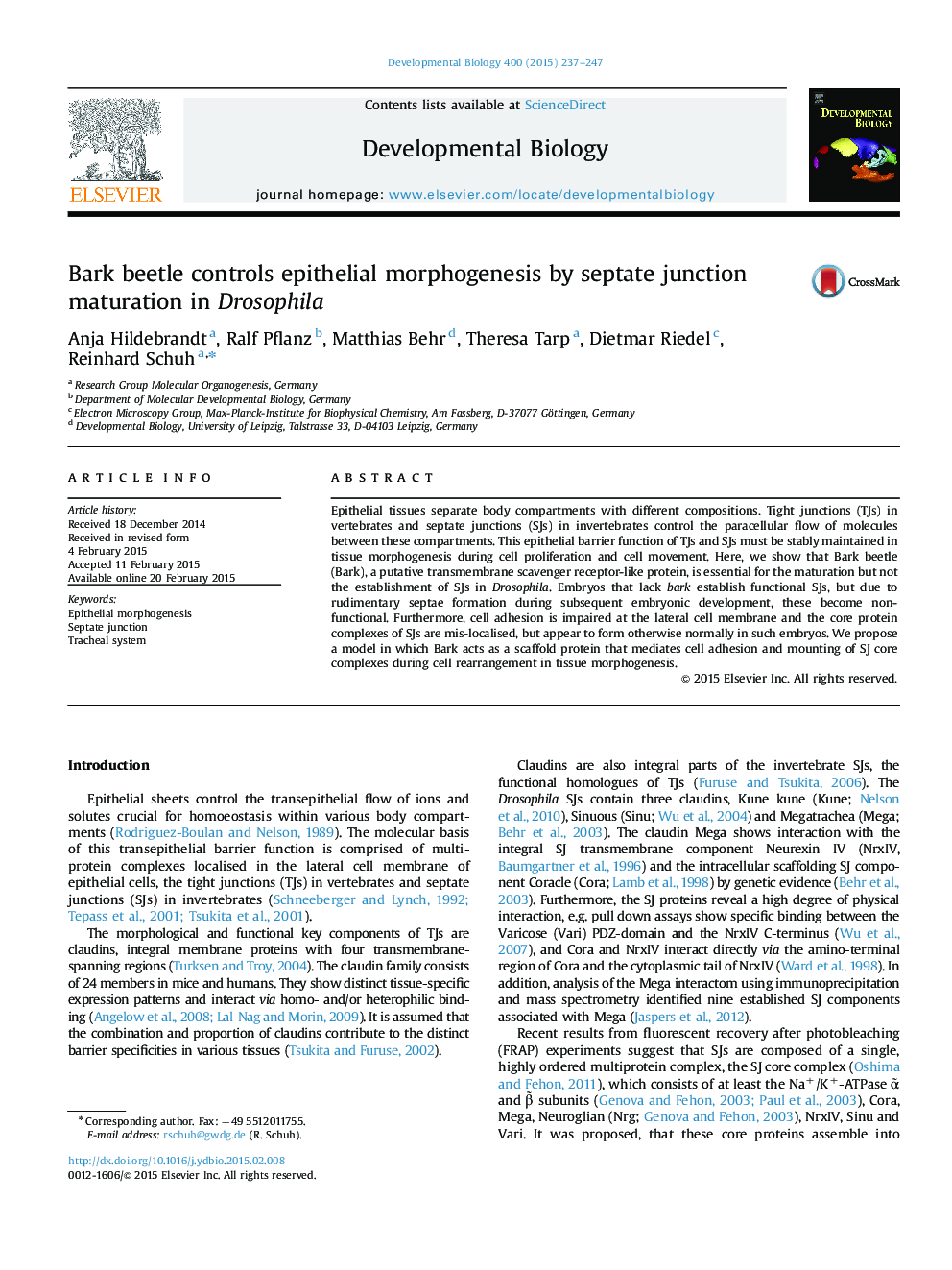| Article ID | Journal | Published Year | Pages | File Type |
|---|---|---|---|---|
| 8467952 | Developmental Biology | 2015 | 11 Pages |
Abstract
Epithelial tissues separate body compartments with different compositions. Tight junctions (TJs) in vertebrates and septate junctions (SJs) in invertebrates control the paracellular flow of molecules between these compartments. This epithelial barrier function of TJs and SJs must be stably maintained in tissue morphogenesis during cell proliferation and cell movement. Here, we show that Bark beetle (Bark), a putative transmembrane scavenger receptor-like protein, is essential for the maturation but not the establishment of SJs in Drosophila. Embryos that lack bark establish functional SJs, but due to rudimentary septae formation during subsequent embryonic development, these become non-functional. Furthermore, cell adhesion is impaired at the lateral cell membrane and the core protein complexes of SJs are mis-localised, but appear to form otherwise normally in such embryos. We propose a model in which Bark acts as a scaffold protein that mediates cell adhesion and mounting of SJ core complexes during cell rearrangement in tissue morphogenesis.
Related Topics
Life Sciences
Biochemistry, Genetics and Molecular Biology
Cell Biology
Authors
Anja Hildebrandt, Ralf Pflanz, Matthias Behr, Theresa Tarp, Dietmar Riedel, Reinhard Schuh,
